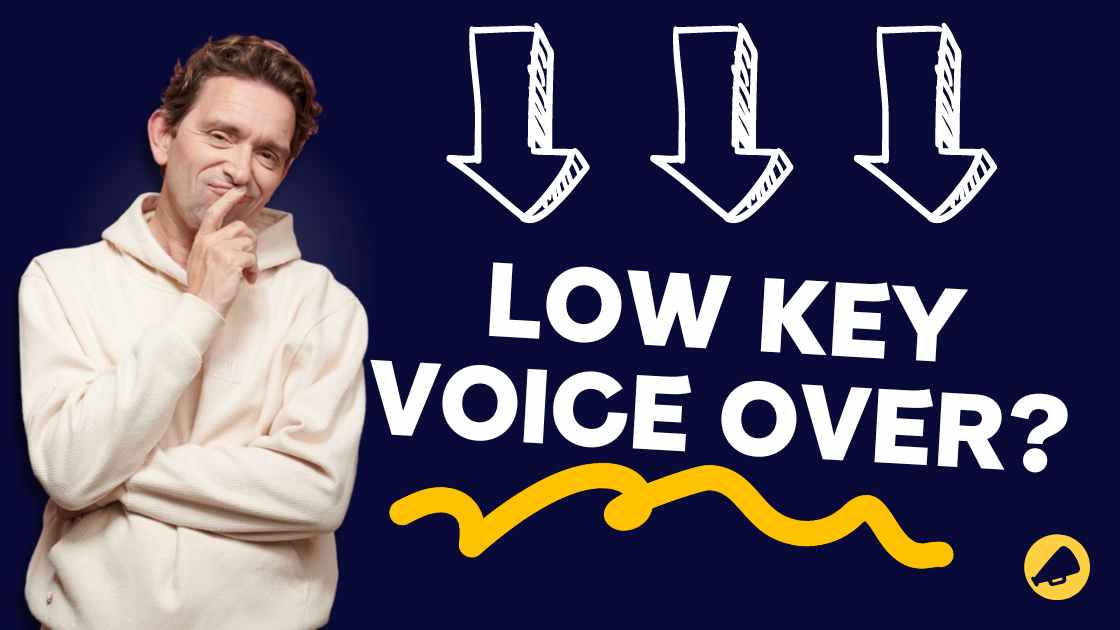One of the biggest trends in voice-over at the moment is keeping voice overs low-key. By putting as little emphasis as possible on specific words, voice overs manage to emphasize one overarching emotion. How do you ensure that the emotion takes the lead? Keeping it low-key starts with writing the text.
In this video I tell you how you can achieve low-key voice overs as a copywriter, by using a video that went viral at the beginning of this year.
Do you have any questions on keeping voice overs low-key after watching the video? Let us know in the comments.
At the moment one of the biggest trends in voice overs is keeping voice overs low-key. How do you achieve that as a scriptwriter or a voice actor?
Hi, I’m Jente Kater from Voicebooking, and in this blog, I will tell you all about it. Just before New Year a friend of mine sent me a video which had, in addition to a nice clear message, a very understated voice-over. Have a listen.
Keeping a voice over low-key: that’s a clear trend at the moment and it is in total contrast of the typical voice over type of the 20th century. If you go back 20 years, then it seems voice over actors were paid precisely to put as much emphasis as possible into a script. Which immediately influences the way you experience a video. The additional advantage that comes with this kind of narration, is that it gives the viewer more space to let the images and music affect them. Understatement that starts with the writing of the text. What’s important is that you really tell the audience something, instead of taking on a sales position. Bring over your story, without pressing the point. The book narrator might be a lead character in your story or somebody who is watching from the sideline.
In this video it was a fictional person. Well, person…? Sort of. And then for you as the voice over actor: just like the scriptwriter you need to try and capture the emotion which best fits the story. What may help is to summarize that emotion into just one word. For instance: kind, angry, irritated, happy or, as in this video, hmm… concerned! Hold on to that emotion and then try to speak the text with as little specific emphasis as possible, so that you leave it to the audience to decide how big or how small they want to make each idea. There will still be words that need some emphasis. However, you can still add subtle emphasis to those words without overemphasizing any word in particular.
You can hear a good example of that at the end of this fragment: ‘Movement’ She didn’t emphasize it. No, she put a slight pause before it. And what’s funny is that the message of this film, if you had to summarize it in one word, it would be that word: Movement. And so, it is that word specifically that is not being emphasized.Now, there is a big disadvantage in keeping your intonation low-key like here. It can make a voice over text really boring.That is the point of criticism which I hear a lot in relation to this kind of videos.
If you compare the opening of this film with a randomly chosen part later on, then it won’t sound very different. Go to any church, mosque or synagogue and you will hear the preacher in question raise their voice every now and then, or pick up a different rhythm, or make a joke. They do that on purpose. To keep you, the listener, engaged with the lesson.
Because telling a story which loses the audience half-way, won’t win you any souls. For you being a scriptwriter, it’s vital that you take this into account. Once you’ve written your text, review it to make sure there’s plenty of variety in it, or maybe a nice twist somewhere. It’s often useful to put that text away for a few hours and then take another look at it just later.Compare it with the bridge in pop music. By making a change in the melody somewhere around 2:50 min, listeners enjoy going back to the original refrain. And as a voice actor please keep this in mind too… What can you do with the pitch of your voice? How are you ending your sentences? Is it often with a downward inflection? Well, try something ending high. Or if you’re speaking the sentence in a high tempo, then take your foot off the gas somewhere.
Normally that would be the part where you add a bit more drive to your voice. After all, you want to activate people with the message. Isn’t it? But does that happen here? Hmm… I’m not sure. She sticks with that low-key delivery, busy with that one trick from the voice over arsenal. The briefing – ‘keep it low-key’ – it appears to have become an end in itself.




